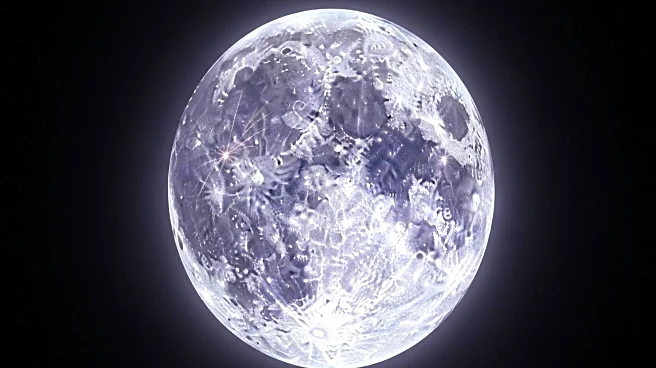What is the story about?
What's Happening?
MIT researchers have proposed a new explanation for the moon's magnetic scars, which have puzzled scientists for decades. The study, published in Science Advances, suggests that a combination of an ancient weak magnetic field and a large plasma-generating impact could have temporarily created a strong magnetic field on the moon's far side. This theory is based on simulations showing that an asteroid impact could generate a cloud of ionized particles, which would envelop the moon and amplify its weak magnetic field. This process could explain the presence of highly magnetic rocks detected near the moon's south pole, opposite the Imbrium basin, where a significant impact likely occurred.
Why It's Important?
This discovery could reshape our understanding of lunar history and the processes that have shaped celestial bodies. The findings suggest that both a dynamo and impact events contributed to the moon's magnetism, offering a testable hypothesis for future lunar missions. This research could influence future exploration strategies, particularly for missions targeting the moon's far side, such as NASA's Artemis program. Understanding the moon's magnetic history also provides insights into planetary formation and the dynamics of celestial bodies, potentially impacting theories about Earth's own magnetic field development.
What's Next?
Future lunar missions, including those by NASA, may focus on sampling rocks from the moon's far side to test this new hypothesis. These missions could provide direct evidence of the impact-related magnetism and further validate the proposed theory. The research opens avenues for more detailed studies on the moon's magnetic history and its implications for other celestial bodies.
Beyond the Headlines
The study highlights the complex interplay between celestial impacts and magnetic fields, suggesting that similar processes could occur on other planets and moons. This could lead to a broader understanding of magnetic field generation in the solar system, influencing the search for life and habitable conditions on other planets.
AI Generated Content
Do you find this article useful?

















